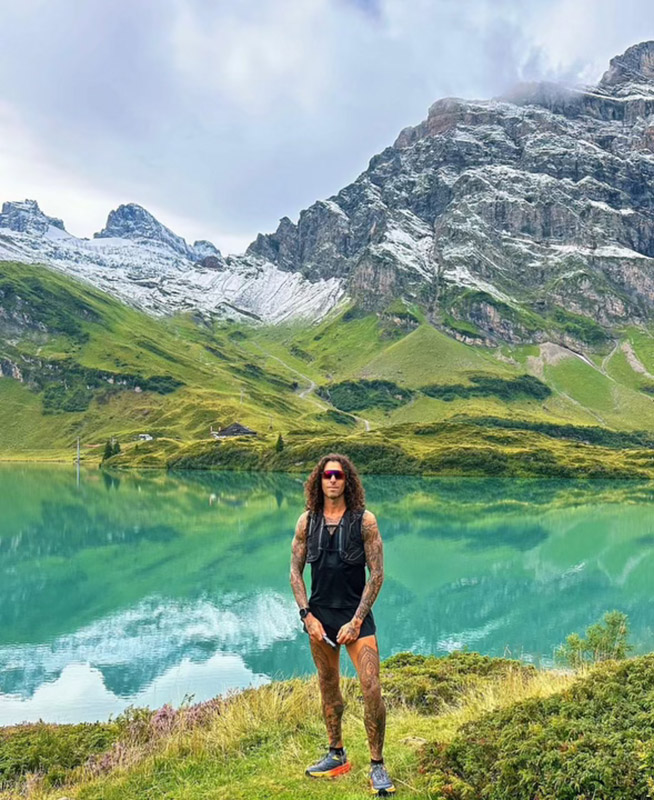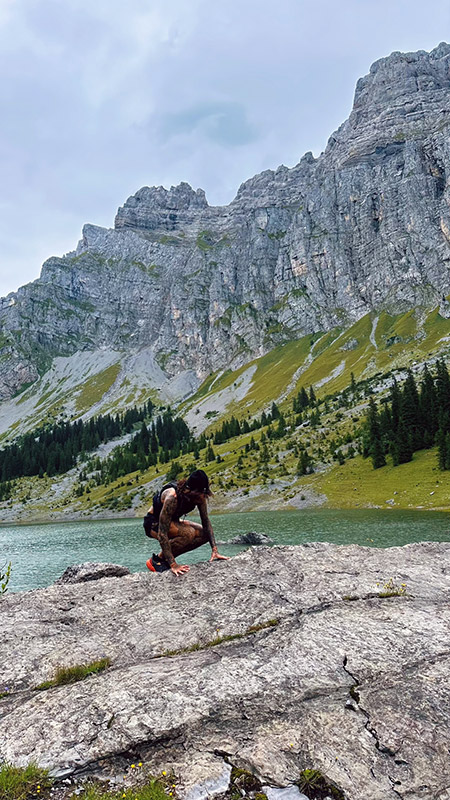In the vast expanse of endurance sports, few challenges loom as large or as daunting as the Cocodona 250—a grueling 250-mile ultramarathon that winds through the heart of Arizona’s most rugged and breathtaking landscapes. It’s a race that tests not just the limits of human stamina but also the resilience of the human spirit. Standing at the precipice of this Herculean task is Eli Wehbe, a seasoned long-distance runner whose feats of endurance have inspired many. In an exclusive interview, Eli shares with us the journey of preparation, both physical and mental, that leads up to the Cocodona 250. From the intricate details of his training regimen to the depths of mental fortitude required to face such an extraordinary challenge, Eli provides insight into what it takes to not just endure but to excel in one of the world’s most demanding races. He also gives us a glimpse into the recovery process and the personal growth that comes from pushing the boundaries of possibility. Join us as we explore the essence of endurance running through Eli’s eyes and discover what it means to go beyond limits.
Follow Eli @eliwehbe

Could you explain the Cocodona 250 and what distinguishes it from other ultramarathons?
The 2024 Cocodona Ultramarathon is a 250-mile race with about 40,000+ feet of climbing all throughout Arizona that starts in Black Canyon City and ends in Flagstaff. This race is tough; it can be anywhere from 80 to 100 degrees Fahrenheit during the day in exposed sun, drop down to single-digit degrees and be below freezing at night. There are a few other 200+ miler races in the US, but this one seems to be at the top of the list from my understanding. With the difficulty level being so high, between terrain and weather, it’s going to be one hell of a few days out there.
How is your mindset as the race draws near, and what inspired you to compete in the Cocodona 250?
I just look at it like any other day of training, one foot after the other, except you just keep going until you hit that finish line. By day two, your brain just hits a flip switch and goes into survival and attack mode, and nothing can get in my way until my toes touch the finish line. I’m cool with the race owner and director; he reached out after I completed a 240+ mile race in Moab, Utah, last year and asked me if I wanted to do the Coco 250, so I said sure, why TF not. It’s also part of the “GRAND SLAM OF 200’s SERIES” which is a series of four 200+ mile races pretty close time frame to one another. Only 9 people in the world have completed them, and I am going to be the 10th on that list. I just love to constantly challenge myself to experience situations that seem impossible to complete, and that’s where the growth is found.
For a race as hard as the Cocodona 250, how do you organize your training schedule and who supports you—coaches, other runners, etc.?”?
I train about 100 miles per week (i try to lower the mileage closer to the race) but with high mileage like that, it always keeps me ready to run any race. I slowly start to carry all the weight that needs to be on your back, which can be up to 20 pounds at times as it gets closer to the race. I have a full team and crew, about 5 guys for this race, and other runners that I met along the journey that come crew and are allowed to pace and run with me once I get closer to the 100-mile range mark.
What is the difference between training for a standard marathon and a shorter ultra-marathon, and how long have you been training for this race?
Time on feet is the difference between standard and ultra; just staying outside for very long periods of time on your feet with constant movement. Standard marathons, depending on what kind of speed you are shooting for, are just shorter training runs with more speeds involved. I started really dialing in about a month ago for this race, but I’m constantly training, like I said before, so I stay ready for any race.

To what extent does cross-training contribute to your readiness? Do you mix in things like swimming, cycling, or strength training?
The only cross-training I do is about 6 days a week of “CORE BURN OUTS”, I just do tons of push-ups with dumbbells, pull-ups, cable cross-overs, medicine ball twists, overhead rope pulls, basically anything that works my core and do repeated burnout sets. It keeps me strong and lean for race day.
How do you manage injuries that arise from the rigorous training needed to compete in the Cocodona 250?
It happens from time to time, I have a pretty good doctor and we usually are able to target the situation if it’s bad, with PRP treatments, peptides, etc. I rarely take off running, even with injuries; I always find ways to work through it.
Could you describe a normal training week for the upcoming race to us?
Anywhere from 10 to 20 miles per day with anywhere from 1600-6k feet of climbing and running. Daily cold plunge and sauna recovery. Daily CORE work outs.
Given the terrain of the Cocodona 250, how do you integrate hill training and elevation gain into your preparation?
I train in the mountains almost every single day. The Santa Monica Mountains are beautiful and have become my second home. I RARELY do any roadwork training.
Mental toughness is essential for ultrarunning. Could you describe any methods or techniques you employ to improve your mental toughness?
How you do anything is how you do everything. If you can stick to that mindset, have discipline, and are consistent, you will be able to push through a race like this, no matter how shitty or hard it gets. It gets REALLY tough. These races eat you alive mentally and physically, but like anything else in life, it’s a rollercoaster of highs and lows. With a little bit of sleep and some food, you will always bounce back.
How do you prepare physically? What is your recovery regimen like? How do you strike a balance between testing your limits and being careful not to overtrain?
I’m sure I’m probably overtraining right now, but my body has gotten used to it; I live for it. Daily suffering and pain are my therapy. I wake up with pains and aches every single day, but it eventually just buffs out. Recovery would be my morning foam rolling and cold plunge/sauna after my runs. I don’t believe in balance; its either balls to the wall with obsession or you do not come out on top. May the most obsessed win.
Ultramarathons demand meticulous preparation, particularly for a race like the Cocodona 250. Which necessary equipment do you pack, and how do you choose it?
There is mandatory gear that we must always have on us; other than that, anything else is personal preference. I will say LUBE and anti-chafing creams are very important. If you don’t take care of your skin correctly, the chafing can be so bad that it can cost you the race. There is a TON of trial and error in doing smaller ultramarathons prior to the long ones.
Ultramarathons are as much a mental challenge as they are physical. How do you deal with doubt or low moments during a race?
You just have to keep talking to yourself to push forward; your mind will play tricks on you and tell you to quit on the first day so many times. I went through a 30-mile stretch on day 1 of my last 200+ mile race talking negatively to myself and wanting to quit, but as long as you keep moving, you will get your mind out of that hole and keep going strong. It happens to the best of us.

Nutrition and hydration are key for endurance events. Could you share your strategy for fueling during the race?
I try to eat/maintain 100 calories every hour; always staying loaded with electrolytes and water is key; I even take sodium capsules during the race. The aid stations always have a ton of food and goodies for you to snack on and fuel on as well.
Can you detail your hydration strategy during the race, especially considering the varied terrain and potential extreme weather conditions?
Well, the first 37 miles of this race are very HOT and exposed to the sun. We are required to have 4 liters of water on us, but I will probably take 6-7 liters and pack my bag out with calories as well. After those first 37 miles, I will probably always carry 2–2.5 liters and we will make it to the next aid station to refill when needed. It’s just that those first 37 miles are supposed to be the hardest part of the race—a ton of climbing and a ton of heat.
Sleep management is crucial in a multi-day race like the Cocodona 250. Do you have a strategy for rest, or do you plan to run through the night?
The last 240-mile race I did, I slept about 4 hours or less in total. I will probably go to sleep every night/early morning for about an hour whenever I start to feel like I can’t keep my eyes or body moving anymore; usually around the early morning is when this happens. I will also take 5–10 minute naps on the sides of rocks in the shade if it hits me badly during the hot days.
With a race as long and isolated as the Cocodona 250, how do you plan your checkpoints and support crew strategy?
The aid stations are all set up by the race itself; my crew will be able to track me and know when I am coming into each station to make sure to get me whatever I need to move on to the next segment (also, my crew is only allowed at certain crew/aid stations, not all of them)
Foot care is critical in ultramarathons. Can you share your strategy for choosing footwear and managing foot health during the race?
I always use KT tape to wrap up each one of my toes and if I feel any “hot spots” coming up on my feet, I just put a piece of the tape over them. I think I figured out where all my hot spots are now with trial and error, so avoiding blisters is the best, but it’s usually tough to get away with none on a race like this.
Do you prepare for the race by eating a particular diet? If it changes at all during your training cycle, how does it change?
I keep the same diet I always do; I never change that up. Granted, I usually just eat whatever choices are available at the race + whatever I pack with me, mainly plant-based during long races.
It can be quite nerve-wracking the night before a big race. Do you have any pre-race rituals? How do you spend that time?
I just eat a solid meal and try to sleep; unfortunately, I’m always excited so I do not get the best sleep, which doesn’t help when I know I won’t be sleeping much during the race, but hey, it’s all part of the game.
Considering the length of the Cocodona 250, how do you manage your time and prepare for the inevitable highs and lows?
My motto is “f*ck it, I’ll figure it out.” I honestly don’t even think about it; I just ride the waves as they come, I’ve been in enough turmoil in my life, and I will always figure it out.
After an ultra-marathon, recovery is essential. What actions do you take to start the healing process right away after the race?
I literally just rest for a day or two, then just get back right into running slowly again and getting back into the gym.
How long do you give yourself to heal before you resume training in the long run, and how does this race change your recovery plan?
Well, with these four big races coming up, I won’t have much down time, so only direction to go, onward and upward.
What is one piece of advice you wish you had known before you started ultra-running?
Carry anti chafe stick on you; carry lube on you; chafing in between your thighs and butt can be one of the most painful things to have to deal with. Take care of your skin.
How significant are support and community in ultrarunning, and what are the best ways to create these networks?
Social media has been great; everyone is super supportive in the community; I’ve built a really cool running family, we are all just like-minded and want to get out there and suffer together; its amazing.
Is there a particular race memory or experience that has had a profound impact on you as a runner?
I would have to say completing the Moab 240 endurance run last year really changed my mindset, it made me really believe in myself to never quit and to keep pushing forward. Nothing is impossible.
How do you celebrate the completion of such a monumental challenge?
Resting and eating a TON of food.
Do you have plans to do more races like this in 2024?
Sure do, three more monster 200+ mile races, as I stated above, in pretty close time frame to one another, it’s going to be one hell of a summer 🙂

